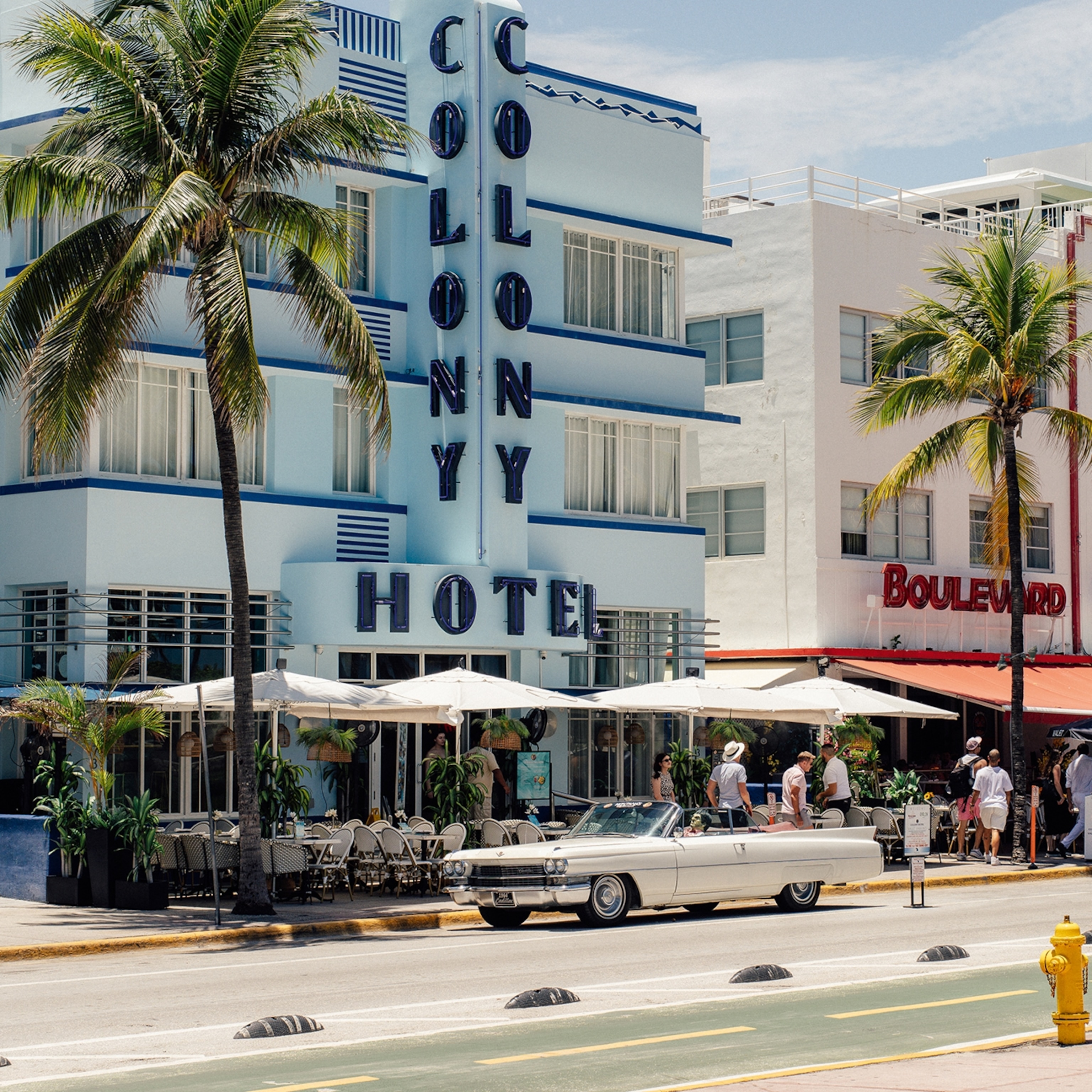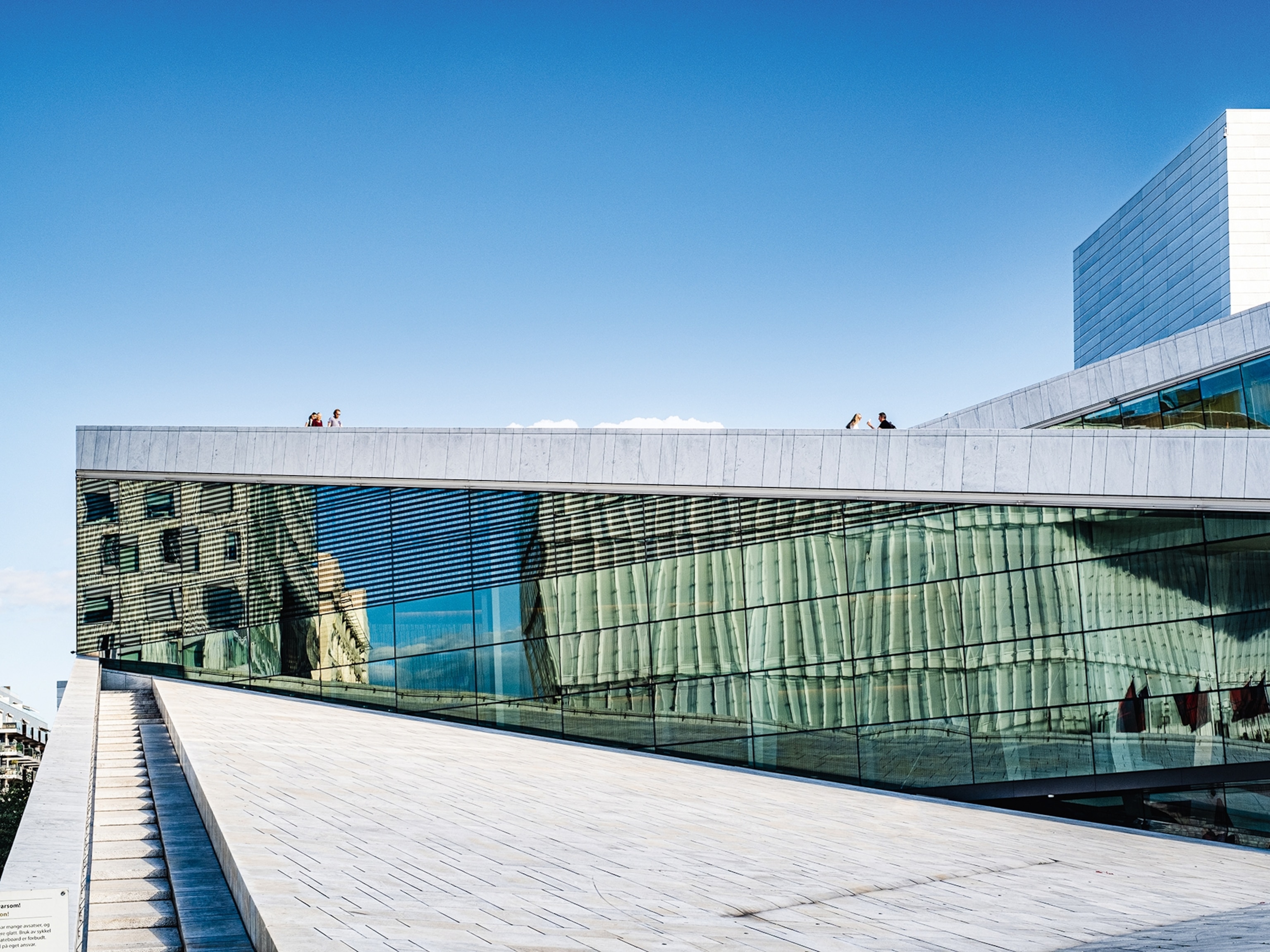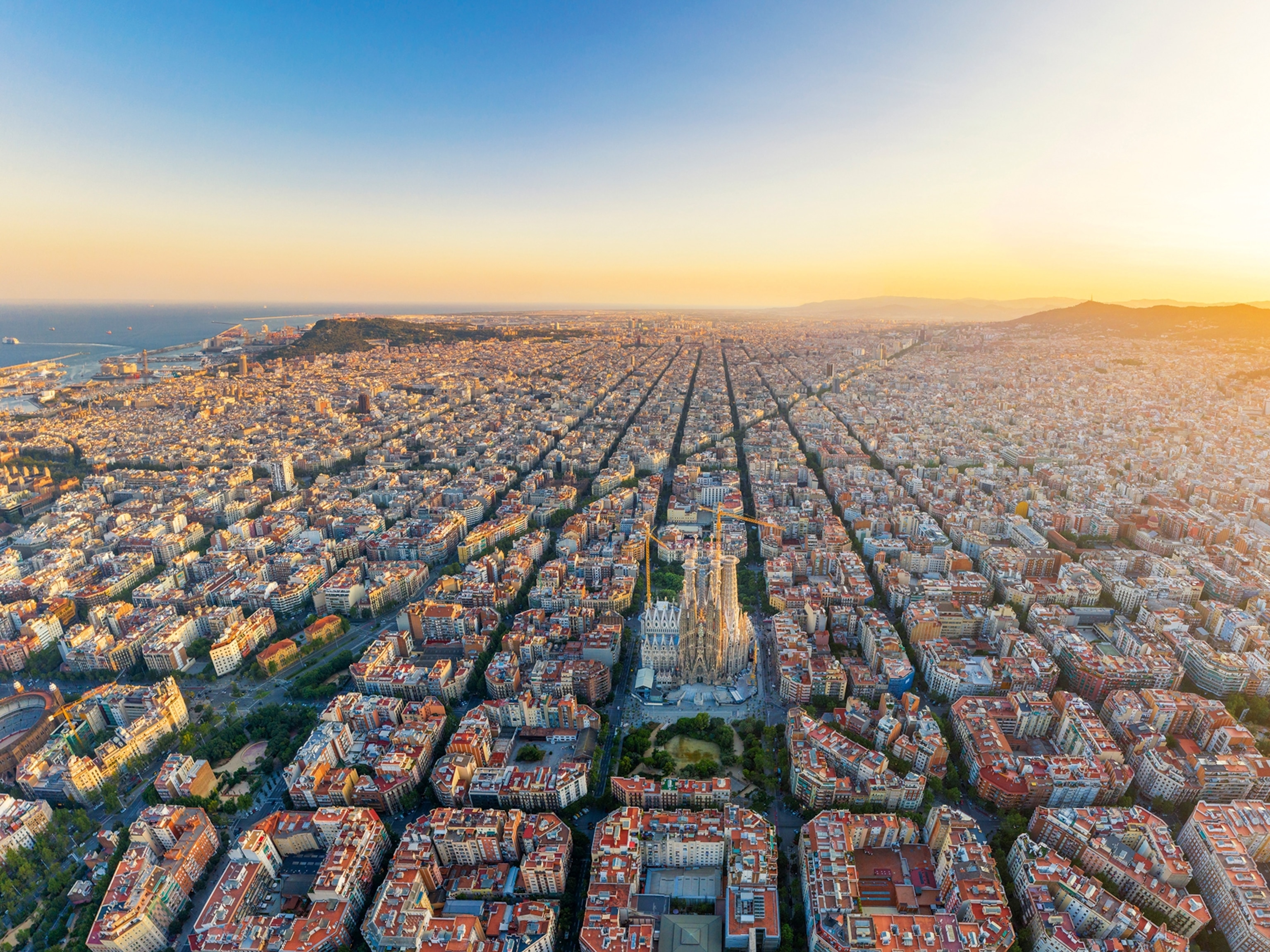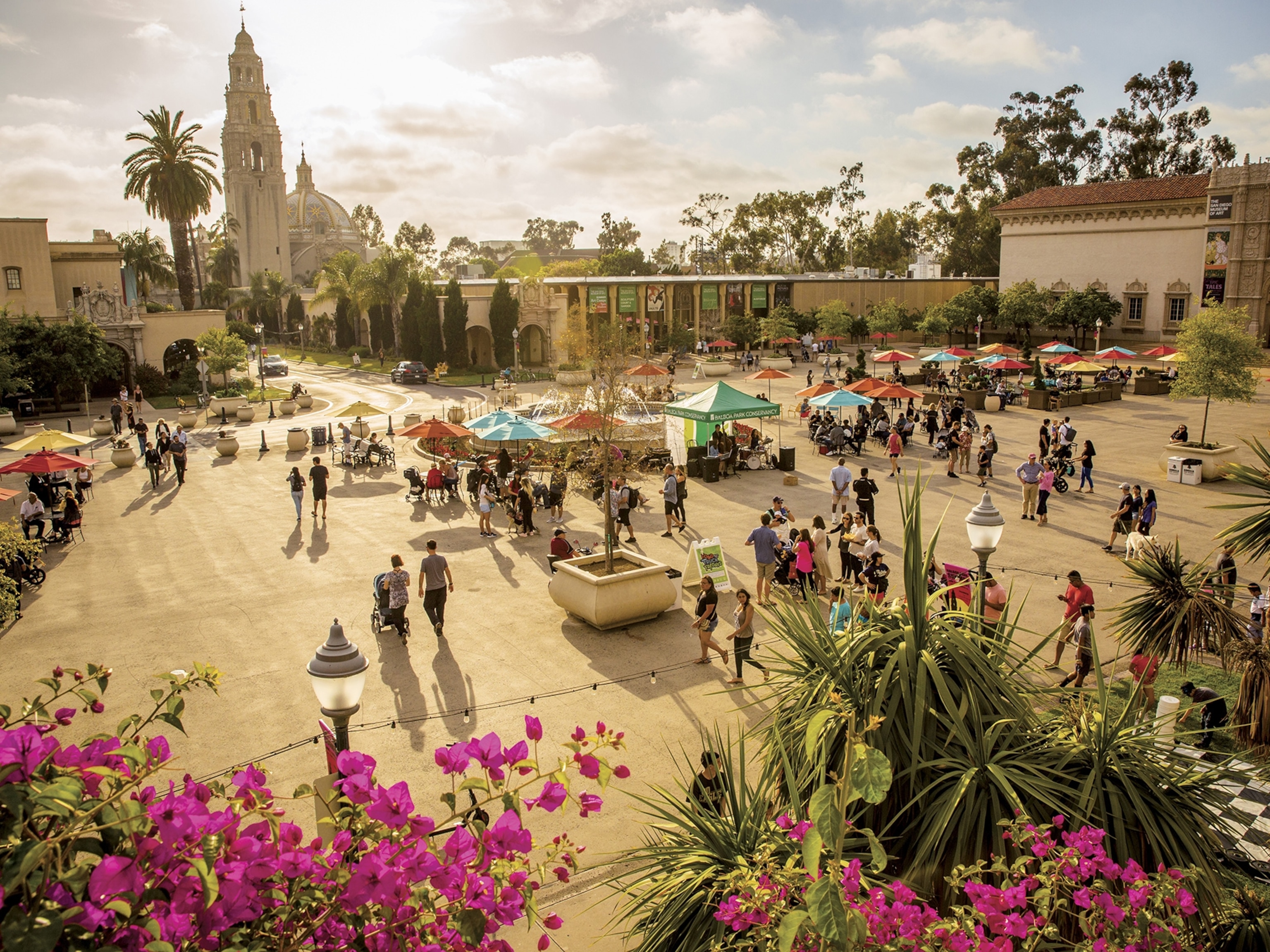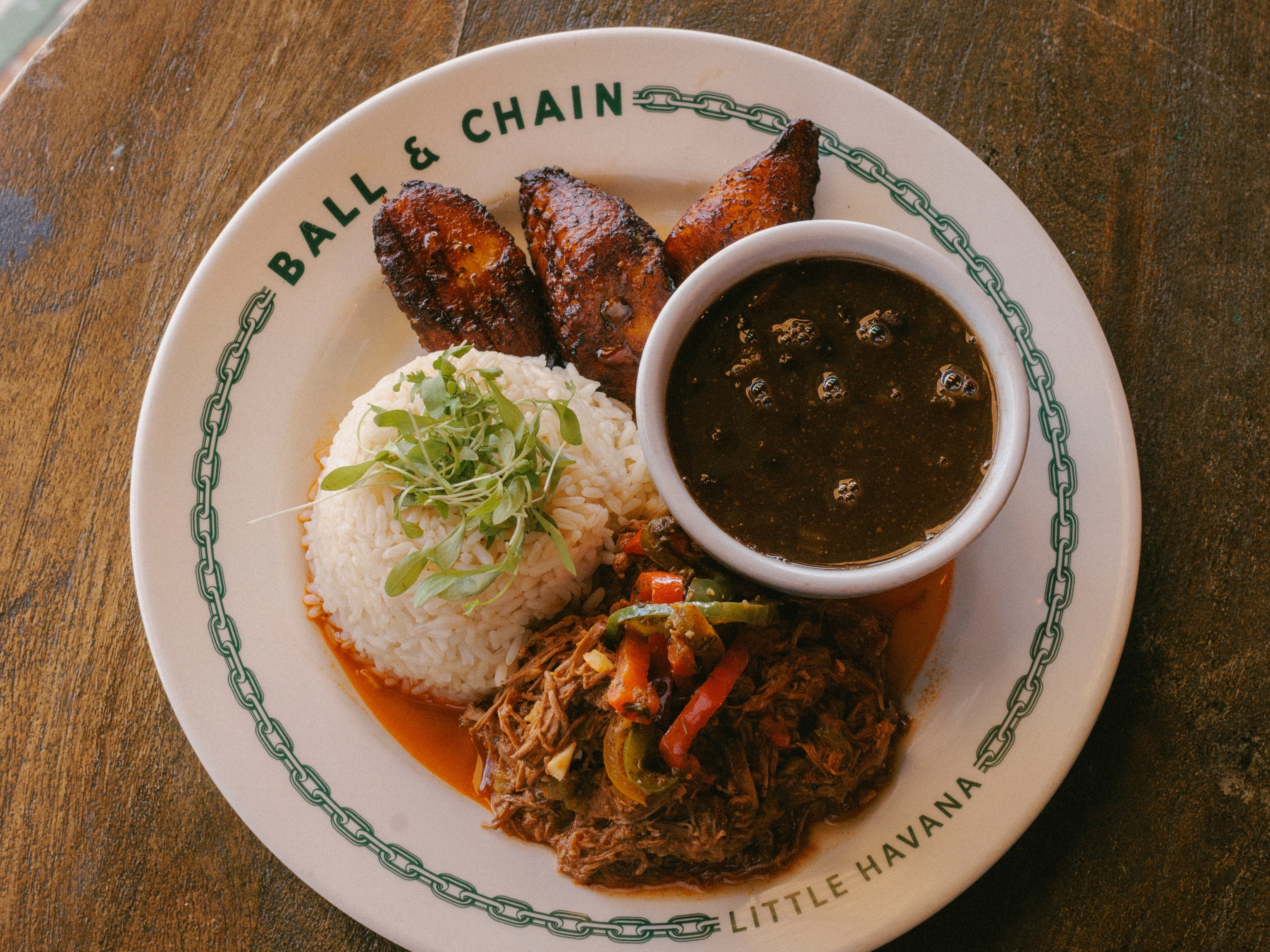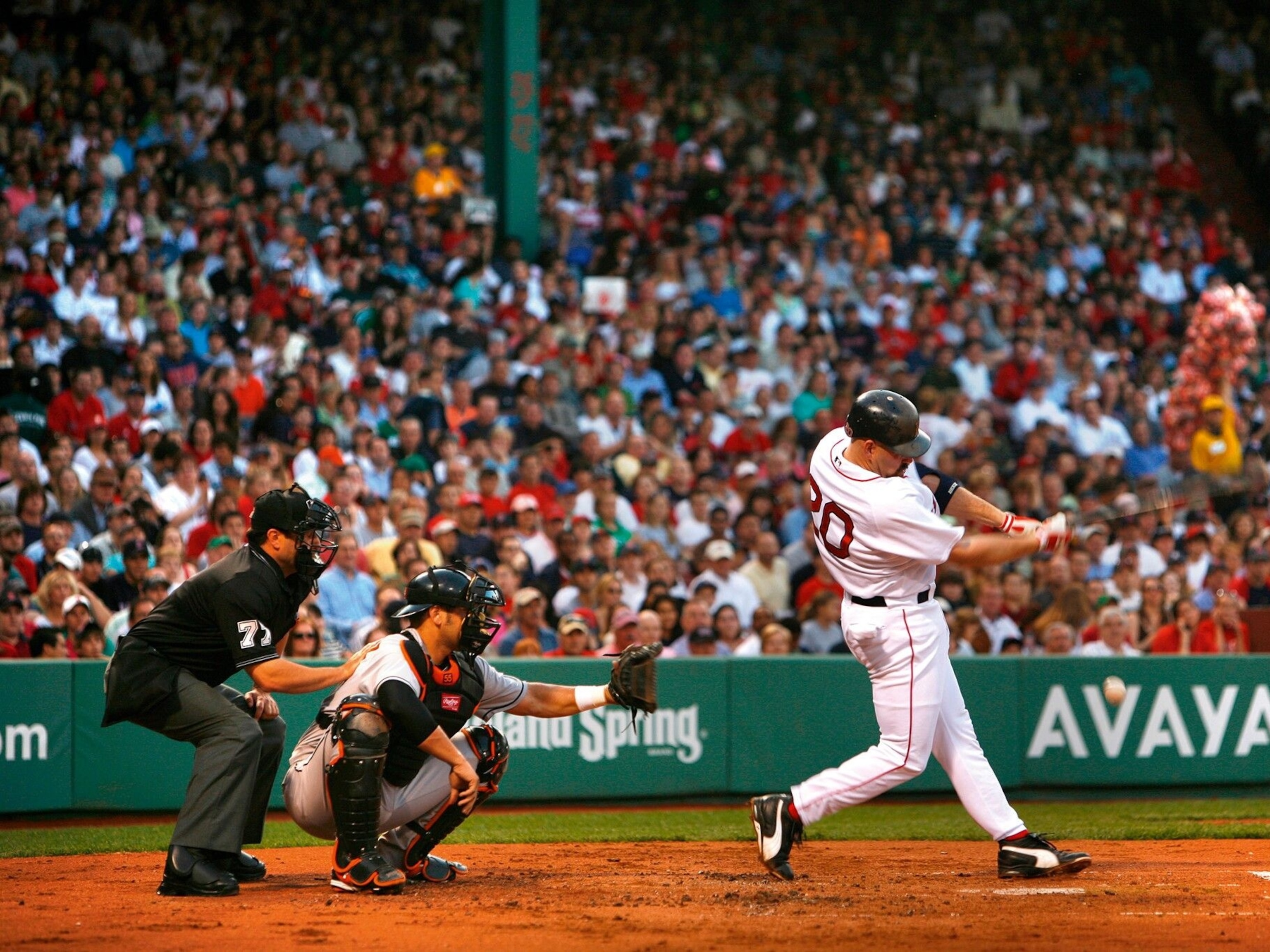A guide to Miami through the decades
Discover the influences that have shaped the city over the decades: the cantineros of Little Havana, the architects of Miami Modernism and the Rat Pack performing in glitzy bars
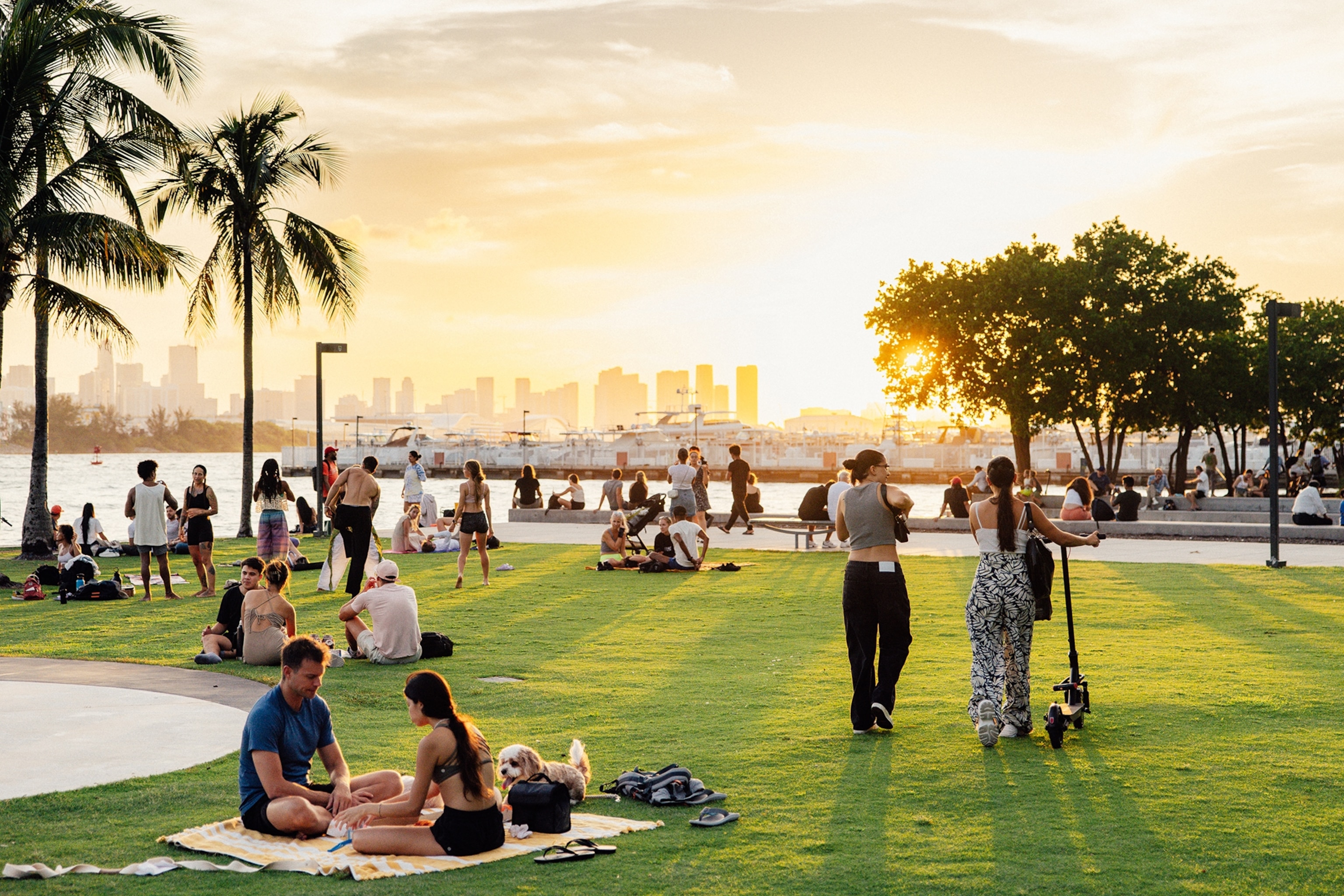
It’s a bright morning and I’m pedalling down South Miami Avenue on a vintage bicycle. Gradually, the glittering corridor of Downtown skyscrapers gives way to banyan trees, the emerald tangle slowly blotting out the sky. Swinging left, I turn onto a forested path. Ahead is the Vizcaya Museum, a limestone mansion with gardens that unfurl to meet the Biscayne Bay. The humid air feels thick, carrying the laughter of a couple posing for photos in a verdigris gazebo.
Travel back just over a century, and Vizcaya, with its antique-filled interior, would have been a new-build — an emblem of the nouveau riche at a time when America was emerging as the richest nation in the world. Back then, Miami was an up-and-coming town, starting to attract wealthy bachelors like Vizcaya’s first owner, the manufacturer James Deering, in part due to its tropical climate. Its population soon swelled with real-estate speculators, sunseekers and later gamblers and gangsters. Al Capone moved onto an island near Miami Beach in 1928, where rum-runners would deposit burlap sacks of alcohol destined for citywide distribution; Miami, historians say, was the leakiest place during Prohibition.
While many these days are drawn to Miami’s modern side, I’m keen to get an insight into what it was like in those early days, in the decades after it was founded. And it doesn’t take much effort to find; more than most American cities, this centenarian wears its historic heart on its sleeve.
The 1920s: Coconut Grove
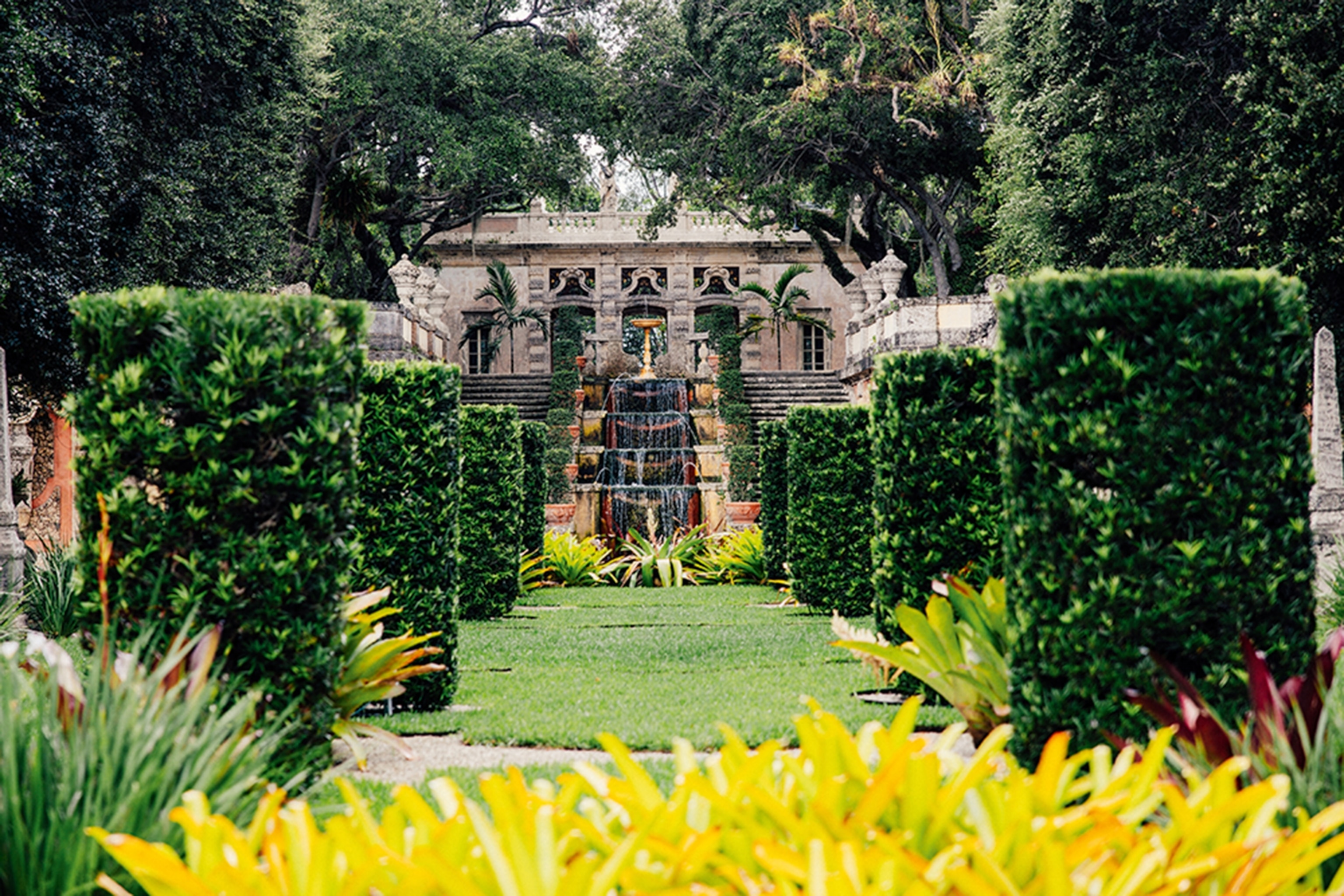
Soon, I’m cycling into the close-knit, low-rise neighbourhood of Coconut Grove, where children file out of yellow school buses into Peacock Park and the main street is actually called Main Street. Beyond the blue-stucco playhouse, being refurbished into an arts centre, the gabled storefronts sit amid ancient oaks and coconut palms, which filter out the sun and make the 35C air feel cooler. It’s 3.30pm, and some of the residents are clinking chilled glasses of white wine on their terraces.
The Grove was settled in the early 1900s — ahead of other Miami districts — and annexed into the city in 1925, and some houses still resemble planters’ cottages and homesteads. There’s hardly a high rise in sight. At dinnertime, I head for a spicy chilli dog and cold lemonade at Taurus, first built to serve tea during Prohibition. The bungalow has since switched focus to whiskey, bottles of which line shelves beneath the old wooden beams.
A floppy-haired man called Jay is sampling one as I pull up a stool at the bar. He turns to me and asks: “You here for work or just livin’ your best life?” He’s wearing espadrilles and expensive Vilebrequin shorts, and tells me he moved here from Pennsylvania to “dabble in real estate”, admitting that work and play tend to blend in Coconut Grove. “It’s a slower life,” he says. “Not like up there.” He gestures north to central Miami, as if it’s New York. “It’s the people that make life here,” he says, before a pause. “People like me.” He grins.
The 1950s: Ocean Drive
It’s 10pm at the Living Room and the crowd is going mad for American Gipsy, a flat-capped band of flamenco musicians. The flagship club at the Faena Hotel, set beneath a gold chandelier and swathed in copious red velvet, is one of the few places on Miami Beach where patrons still throw on slinky backless dresses and linen suits to enjoy the evening’s entertainment. Their cameras are all trained on the band. When the musicians launch into a Latin rendition of Frank Sinatra’s My Way, everyone rises from the tiger-print sofas to dance. The lead singer, running his fingers through the white streak in his thick black hair, switches into Spanish for the second verse: “Jamás vivi un amor. Que para mí fuera importante...”. The crowd sing along fluently.
“These guys always bring the house down,” says my server, Natalia, who’s wearing a red dress. She gestures to the adjoining dining room, where the diners, nodding along, have lost interest in their steaks. “We used to have a divider between the rooms, but people kept leaving their tables to head over here.”
The fervour comes as no surprise. This is, after all, the erstwhile Saxony Hotel, the ‘Queen of Collins Avenue’, where the Rat Pack — the coalition of singing 1950s entertainers — ruled. Back then, Frank Sinatra and Dean Martin headlined in $1,000 suits and tortoiseshell shades, and the interior had a colour scheme as blue as Sinatra’s eyes. Back then, Miami felt awash with spotlights, and the spirit of that heyday is still channelled here.
The next morning, I cycle down Collins Avenue to Ocean Drive, and inadvertently time travel — or so it seems. Every restaurant, every pharmacy, every boutique hotel has streamlined art deco motifs. As I pass by The Betsy Hotel, all alabaster arches between the palms, three naval officers march past in white caps and collars, like extras in Sinatra’s 1949 classic On the Town.
I’m in no rush, and decide I’d better get off my bike and walk — all the better to take it in. The morning light is amplifying the pastel hues of the buildings lining the road, casting them in every shade from sunshine yellow to raspberry sorbet. To my right, a swathe of palm trees whispers gently in the warm sea breeze.
Gradually, the facades are getting more eccentric the further north I go. In the 1950s, architect Morris Lapidus developed a ‘too much is never enough’ style that he branded Miami Modernism, or ‘MiMo’ for short — combating the minimalism of the previous generation with curvaceous silhouettes in high-shine metal. In response, art critics at the time dubbed his columns and porthole-shaped cut-outs ‘bourgeois fantasy’, and at one point even ‘pornography’. One of Lapidus’s most legendary creations was the Fontainebleau hotel, which still stands as the hub of the hedonistic Mid-Beach scene.
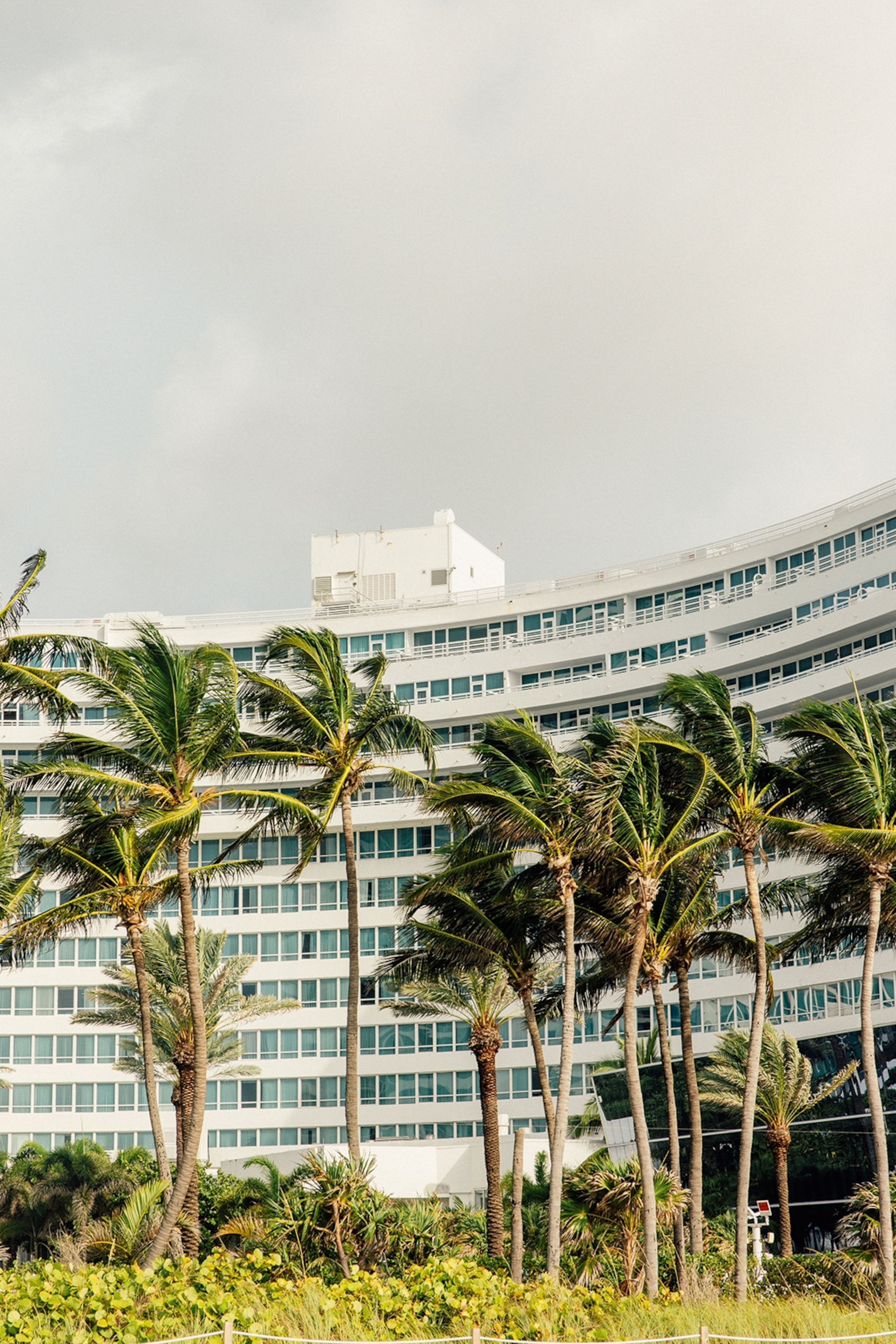
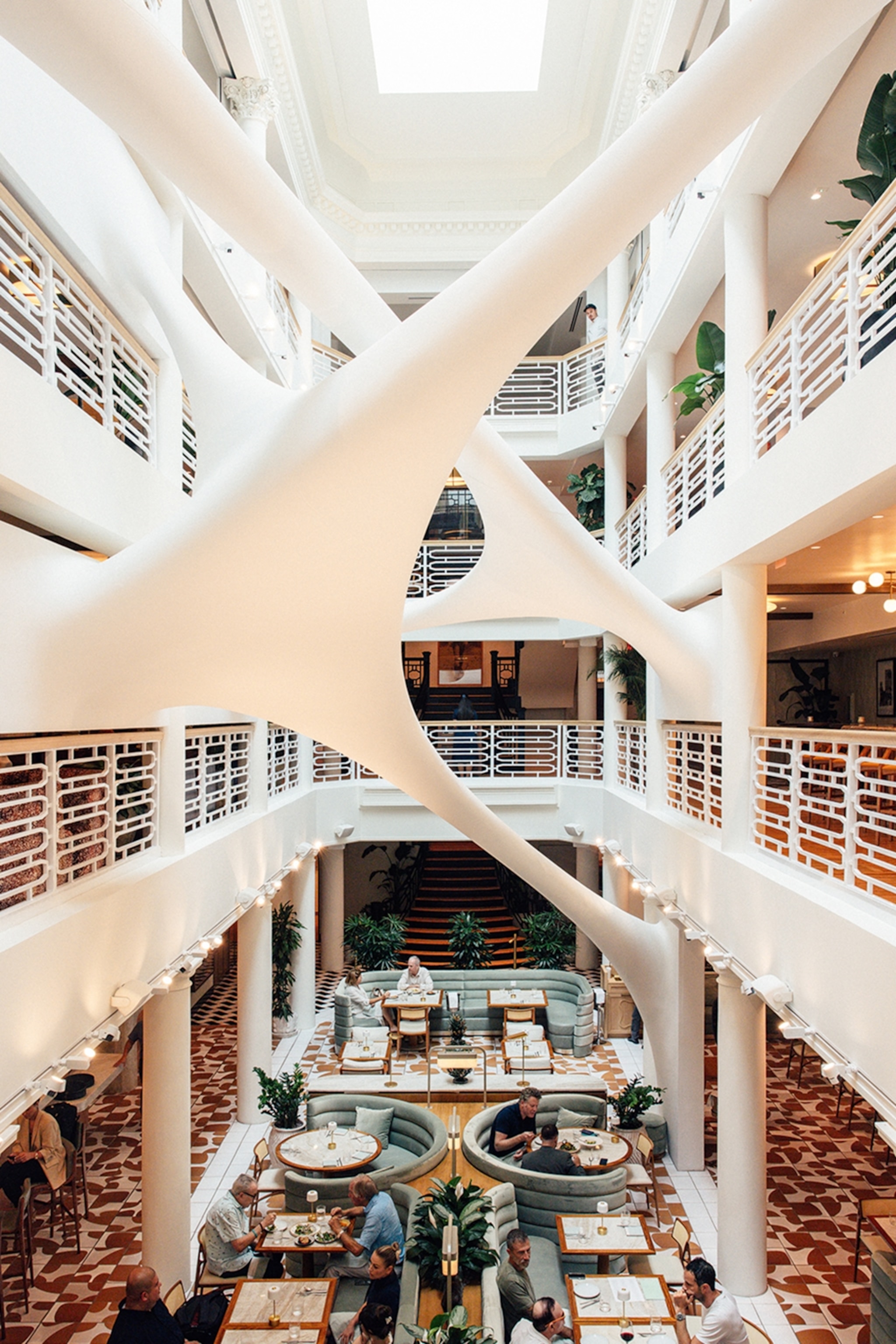
While The Saxony may have drawn crowds for having the first air-con on Miami Beach, the Fontainebleau was arguably even cooler — while the Rat Pack performed at the former, they chose the latter as their more regular base. And now, the hotel is as unstuffy as they come.
As night falls, I head to Bleau, the hotel’s circular, back-lit bar with gilded pillars and marbled floors, standing in a three-deep crowd of whooping thirtysomethings. I ask Michele, the young bartender handing me a Feeling Bleau (tequila, Cointreau, peach), if this is unusually loud for a week night. “This? It’s always like this,” he says. “We have a reputation to uphold.” He motions for my phone, which I unlock so he can search for a photo of Sinatra standing where I am, with a crowd that’s also three deep at the bar. There are the same fluted pillars and the same brass railings; the same bow tie motif adorns the napkins on the marble bar, a bottle of Jack Daniels in the place of today’s tequila.
In the background, more guests are flouncing down a central sweeping staircase, which was seemingly designed by Lapidus purely for making an entrance. They’re all wearing Miami Beach’s modern-day uniform: body-con mini dresses, bicep-baring T-shirts or wisps of sheer fabric.
The 1960s: Little Havana
The city’s most famous Cuban restaurant is Versailles, though it bears little resemblance to its namesake chateau. It’s had the same sea-green chequered floor tiles for 53 years, with canteen-style chairs and perfunctory, dish-slinging service. The brass chandeliers and cafeteria crockery feel stuck in the 1960s, and the fries are made from yucca.
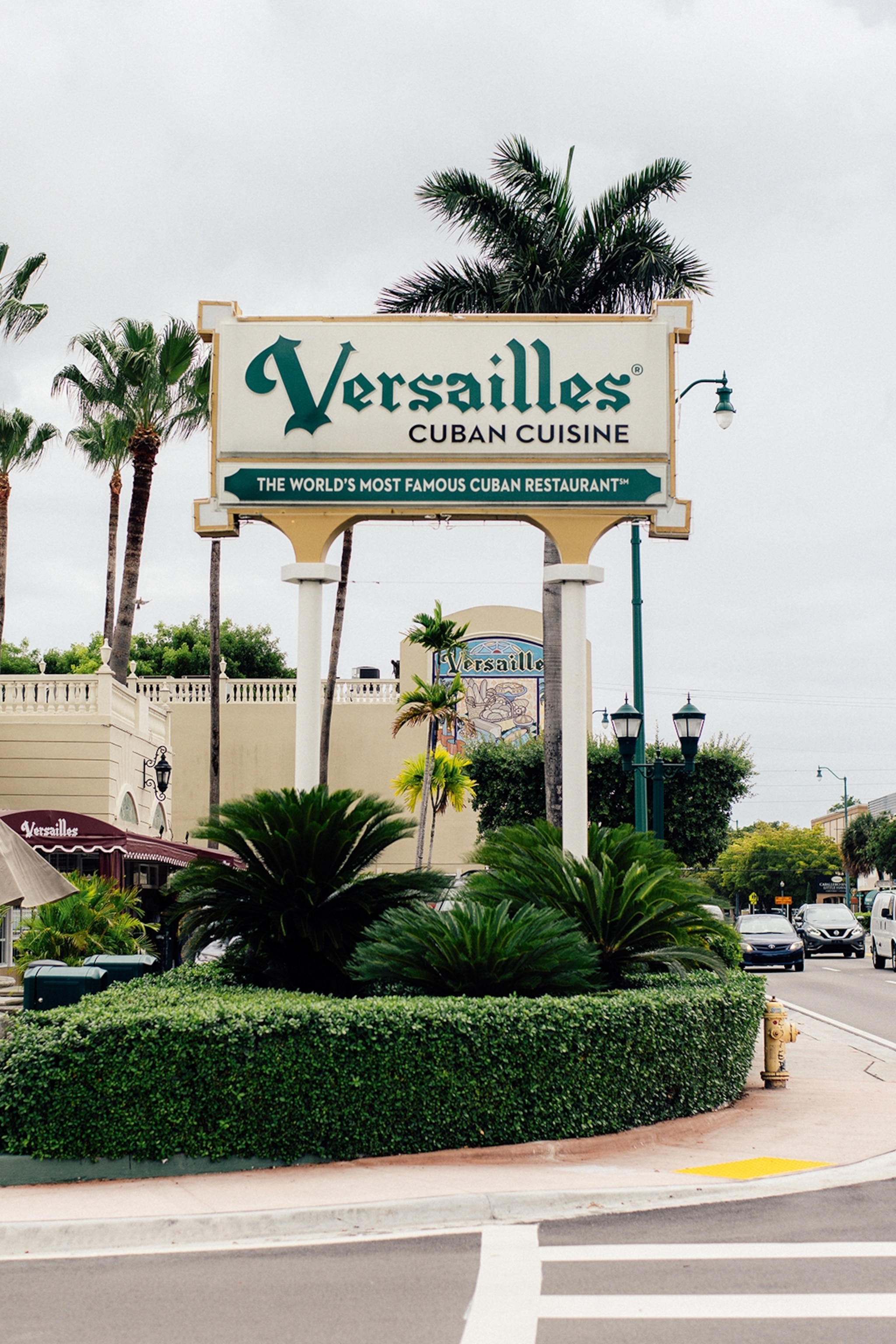
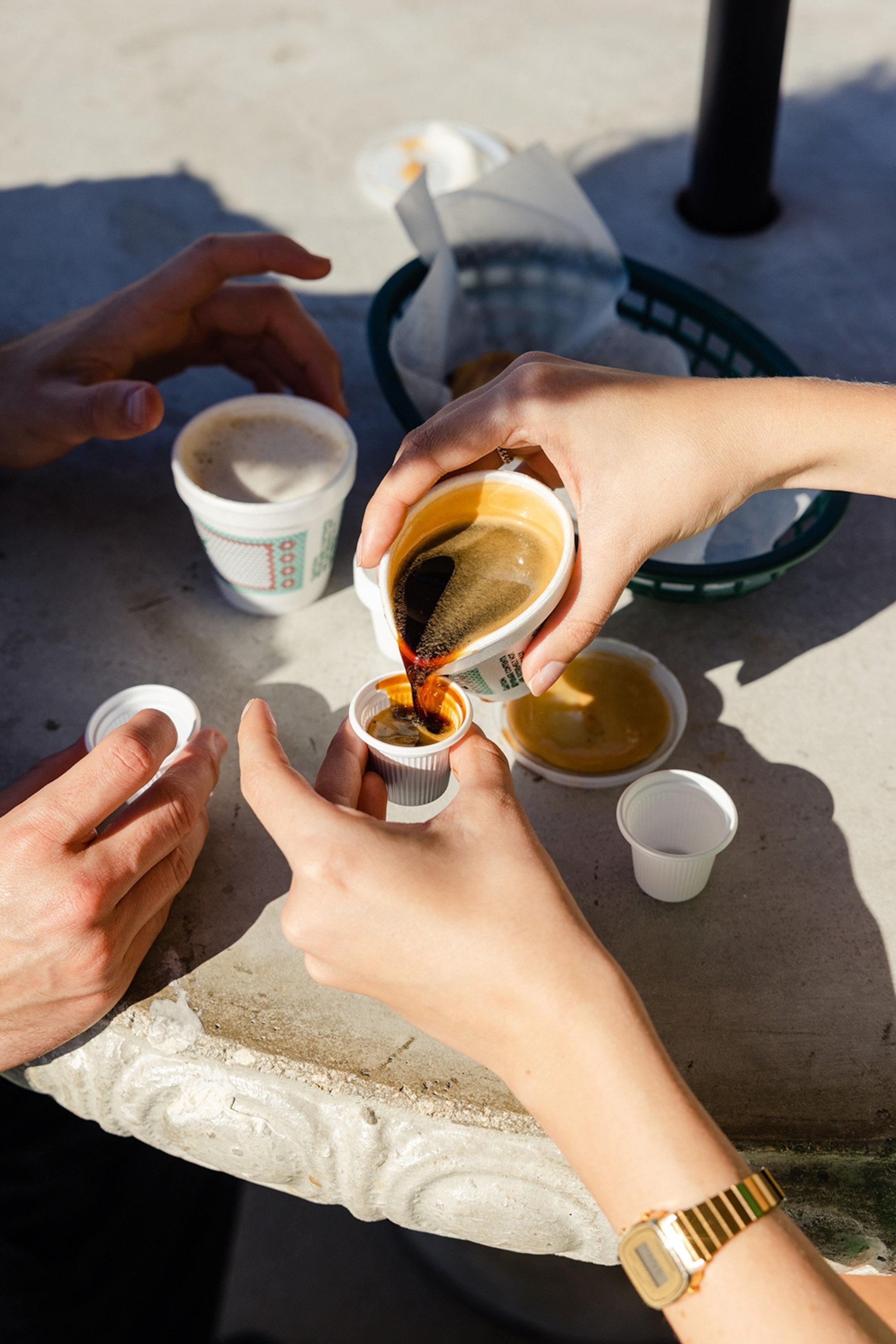
I’ve come for a pan-fried palomilla steak marinated in tangy lime, with a side of fufú con masitas — mashed plantain with pork — slung by a waiter who looks like the actor Oscar Isaac with a thick Spanish accent. But I’m also here because of Versailles’s reputation as the foremost dining room for the Latino community. A barrio atmosphere runs through this part of Miami, six miles west of downtown. Here, as you stroll Calle Ocho, Little Havana’s 8th Street, DJs on car radios are speaking in Caribbean Spanish, while children pedal BMX bikes past racks of traditional Cuban guayabera shirts. Cuban coffee and guava tarts grace bakery menus. It feels like a town that’s a world away from the skyscrapers that lie just a short drive back east. In modern Miami, few consider staying in this workaday enclave, where the unofficial town hall is a fruit market called Los Pinareños that’s operated by a 95-year-old Latina.
How did Little Havana come to be? An abridged history begins in the mid-20th century, when the US had tasked itself with vanquishing communism. In the early 1960s, with Fidel Castro’s new regime seeding hostility toward wealthier Cubans, the US military air-lifted nearly 15,000 of them out of the country. The so-called ‘Freedom Flights’ brought in hundreds of thousands of refugees. These people settled around 8th Street, and were later joined by Puerto Ricans and other Latinos.
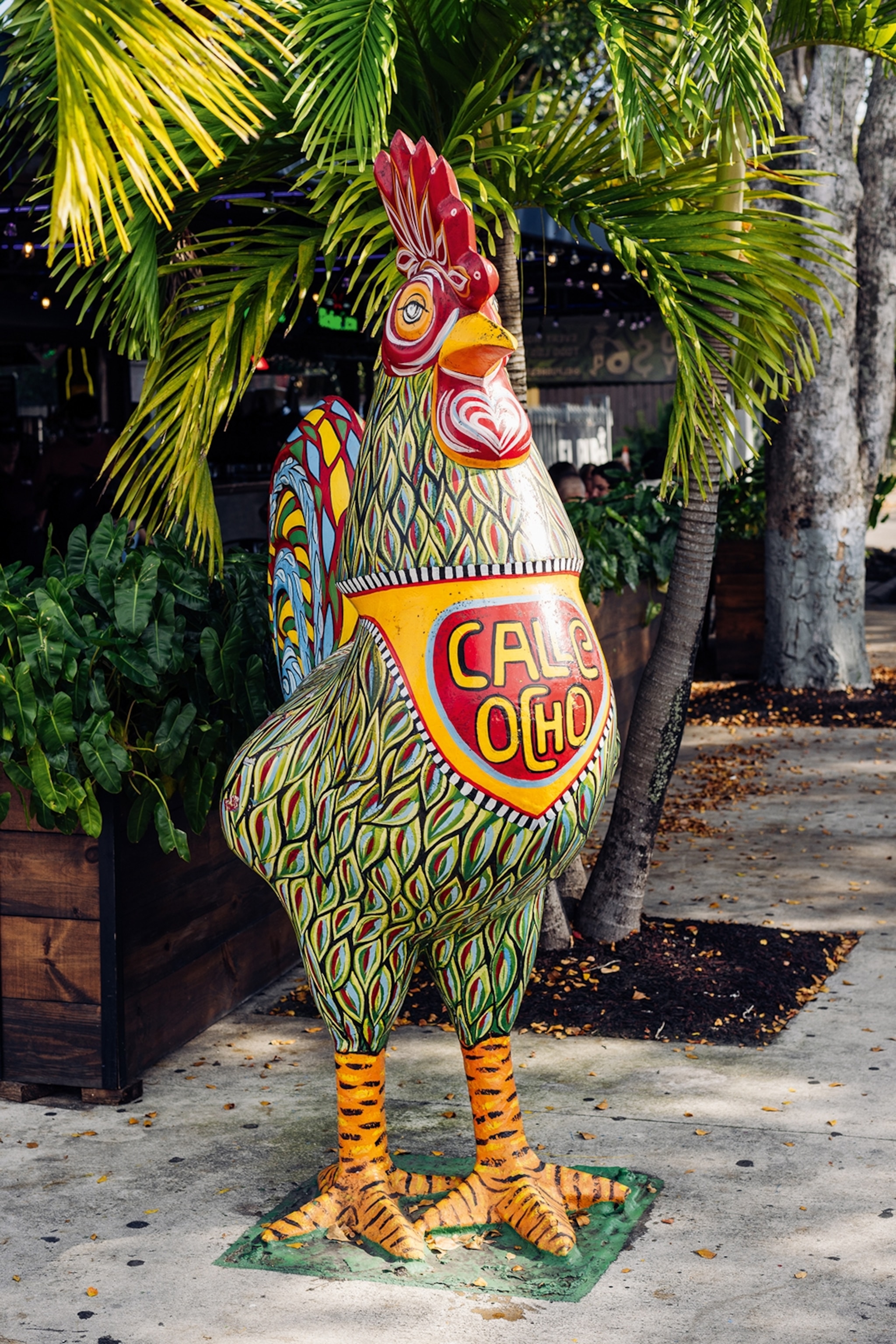
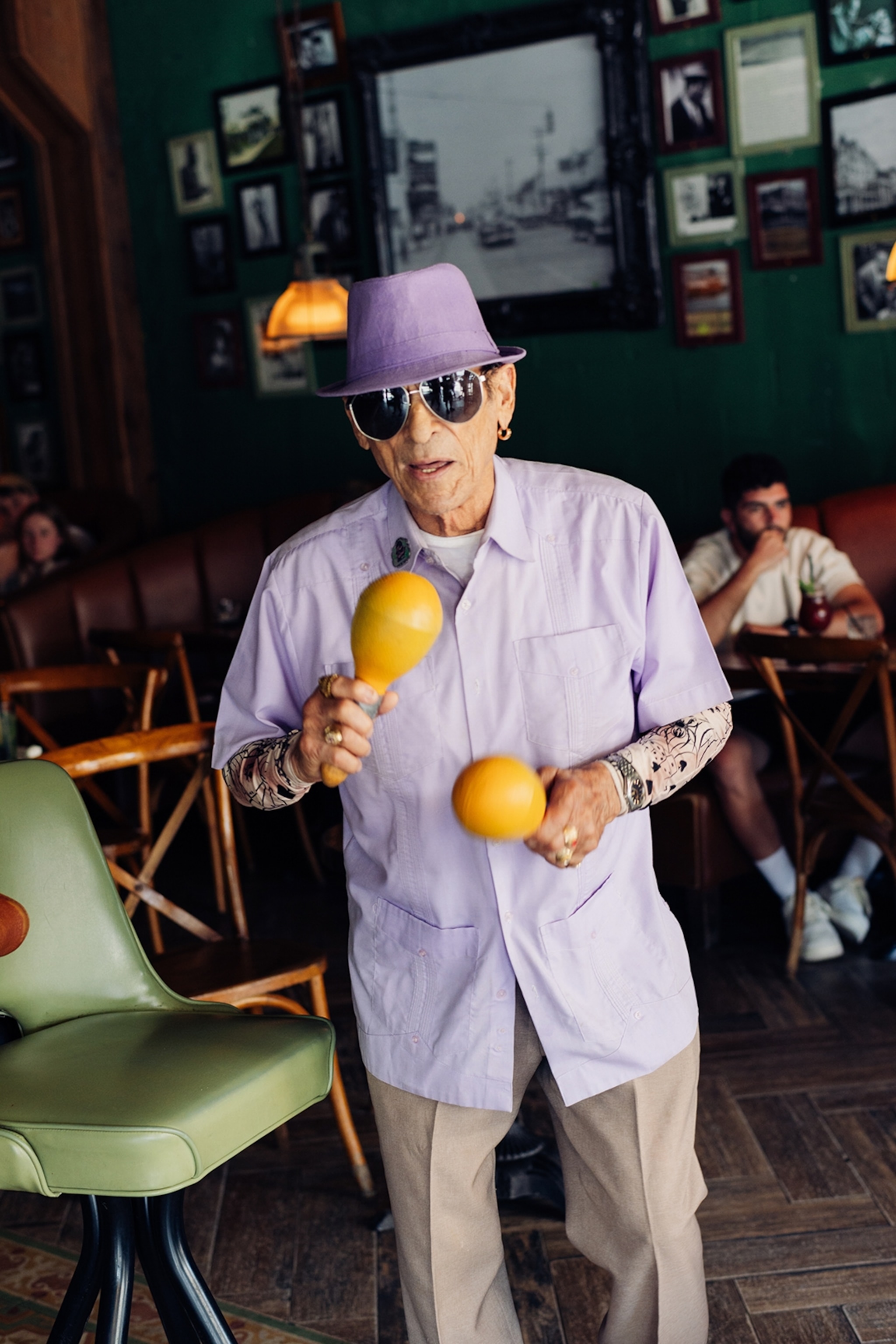
A torch at the Bay of Pigs Monument nearby has now burned for decades, through the 1970s and 1980s, and even recent gentrification. The old Tower Theatre still shows Spanish films. And at nearby Domino Park, a standing game of dominoes — a veritable national sport in Cuba — has mushroomed into a permanent tournament, with games at any given time.
Many visits to Little Havana start and finish with food. At dinnertime, I squeeze up at the mahogany bar at Cafe La Trova, and reach deep for my high school Spanish — while English is tolerated, Spanish is preferred. The ceiling fans whirl, the band launches into a Louie Ramirez number and Javier the bow-tied barman decants my buenavista cocktail (gin, cucumber, elderflower) from about a foot off the bar beneath the copper pendant lamps. Lithe as a dancer, he dashes around on his toes to grab a sprig of mint and juggle a handful of limes.
Despite having existed for just five years, La Trova feels anchored in the 1960s. Cuban emigre owner Julio Cabrera created it to celebrate bartenders — cantineros in Spanish — like his father, whose own cafe was confiscated in Cuba. The dining room is painted with trompe-l’oeil windows, through which you can make out strings of drying laundry, designed to look like the vista from a typical Havana apartment. But the immaculate white shirts, ostentatious cocktail-shaking and chummy exuberance of the cantineros are why La Trova has made the World’s 50 Best Bars list for three years running. Naturally, franchisees have come running.
“They say, ‘I have money to invest. Come to New York’,” says Javier from behind the bar. He wags his finger. “No. Nunca. Only here is the cantinero culture. We talk to customers. We dance. We play music. That’s why they come.”
A cantinero shoves a maraca into Javier’s hand. Suddenly, spectators aren’t sure whether to watch the stage or the bar, where six more have amassed with various percussion instruments and a trombone. Patrons stand to salsa between tables. The song lasts 14 minutes.
At closing time, when the house lights come on, I hear the revellers behind me hatching a plan to carry on to clubs westward. It’s midnight — prime time in Little Havana. In the opposite direction, the twinkling office towers of Downtown appear far away in the dark. I turn my back on them and follow the crowd.
Wexas Travel has a 10-night Miami and Florida Keys self-drive trip from £2,710 per person, including flights, airport lounge access and car hire.
Getting there & around:
Norse Atlantic flies direct to Miami daily from Gatwick. Virgin Atlantic and British Airways fly direct to Miami daily from Heathrow. Average flight time is eight and a half hours.
When to go:
Summer can be hot, with average highs of around 35C, which can creep into May and October, too. It can also be wet. Winter generally remains dry and sunny, with average temperatures in the low 20s. Various festivals can make the city busier: the Design Miami festival happens in early December, while college spring-breakers hit the beaches in February.
Where to stay:
Fontainebleau Miami Beach, Mid-Beach. From $377 (£298).
Mr C, Coconut Grove. From £169.
More info:
miamiandbeaches.com
mdpl.org
This story was created with the support of Greater Miami and Miami Beach.
To subscribe to National Geographic Traveller (UK) magazine click here. (Available in select countries only).
You May Also Like
Go Further
Animals
- What would the world look like without mosquitoes?What would the world look like without mosquitoes?
- Social media loves to villainize dolphins. Here's why it's wrong.Social media loves to villainize dolphins. Here's why it's wrong.
- How did wolves evolve into dogs? New fossils provide cluesHow did wolves evolve into dogs? New fossils provide clues
- This unorthodox method is saving baby parrots from extinctionThis unorthodox method is saving baby parrots from extinction
- A deadly disease that affects cats big and small found in U.S.A deadly disease that affects cats big and small found in U.S.
Environment
- ‘Corn sweat’—and other weird weather phenomena—explained‘Corn sweat’—and other weird weather phenomena—explained
- A sea tornado sank a yacht. We might see them more often.A sea tornado sank a yacht. We might see them more often.
- How billions of dollars are revolutionizing ocean explorationHow billions of dollars are revolutionizing ocean exploration
- Where to go stargazing in Chile according to a local astronomer
- Paid Content
Where to go stargazing in Chile according to a local astronomer
History & Culture
- Did Babe Ruth really ‘call’ this legendary home run?Did Babe Ruth really ‘call’ this legendary home run?
- The real history behind the legend of China's Monkey KingThe real history behind the legend of China's Monkey King
- How new technology transformed the American workforceHow new technology transformed the American workforce
- This secret Civil War sabotage mission was doomed from the startThis secret Civil War sabotage mission was doomed from the start
- This rare burial site reveals secrets about the Sahara's lush pastThis rare burial site reveals secrets about the Sahara's lush past
Science
- Why some say tennis is 'the world's healthiest sport'Why some say tennis is 'the world's healthiest sport'
- Your body ages rapidly at 44 and 60. Here's how to prepare.Your body ages rapidly at 44 and 60. Here's how to prepare.
- How do gold nuggets form? Earthquakes may be the keyHow do gold nuggets form? Earthquakes may be the key
- Astronauts getting stuck in space is more common than you thinkAstronauts getting stuck in space is more common than you think
Travel
- These are the must-see sights of Italy's Veneto regionThese are the must-see sights of Italy's Veneto region
- A guide to St John's, Atlantic Canada's iceberg capitalA guide to St John's, Atlantic Canada's iceberg capital
